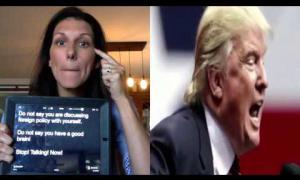How to Write a Vital Speech
March 22, 2018
The speechwriter recommends that you be a humble servant, a good student and a sincere believer in the speaker and the cause.
It is fair to say that not many corporate speeches get featured as “Vital Speech of the Week.” Especially not one which, essentially, sets out to explain a company’s strategy. The fact that a speech given by Ben van Beurden, CEO of Royal Dutch Shell, made the grade came as something of a surprise and a delight.
What made this speech different? I would like to say it was all in the writing … but that would not be very honest.
For a start, it helps a lot if you are writing for somebody with something big to say … and that’s van Beurden on the company’s approach to greenhouse gases. Other energy companies have pledged to act over the emissions linked to their operations. But, of all the greenhouse gases associated with energy, less than 15% come from bringing it to the market. The rest come from customers using the products. Van Beurden’s ambition means Shell will take action on both. It is a direction that will, over time, transform the company’s product mix and it was van Beurden’s illustration of the potential scale of this change that generated the most headlines.
The ambition had previously been announced to investors in November … but not everybody had noticed. CERAWeek, an annual gathering of the big boys of oil in Houston, was the perfect chance to change that: an international oil and gas CEO talking climate change in the spiritual home of the oil and gas industry. When van Beurden spoke, his words offered quite a contrast to the other speeches delivered in that hall. And it certainly got noticed this time.
The message was good, the context was right … and the editing was excellent too. Shell is a company that invests in the quality of its writing. It has a dedicated editorial team and everything I write (including this piece) goes through at least one, very experienced, former journalist. It makes a big difference and, I promise you, the first draft of the speech would not have made it on to VSOTD.
All of this was essential to the success of the speech, and none of it had much to do with me. In thinking about how I might go about replicating the success, however, I realised that there are a few things I can do again … and that others might copy.
The first is the attention to detail I brought to this speech.
I have written many times for van Beurden and had, of course, already got to know him as much as possible. But I redoubled my efforts for this speech. CERAWeek is a fixture in the oil and gas calendar and I knew he would be speaking months out. So, apart from talking to him face-to-face as usual, I also closely observed him … ever-so-slightly obsessively … with this speech in mind.
The most valuable tool in this campaign was transcripts. Every time he talked to a journalist, that conversation was invariably recorded and transcribed. I studied each transcript closely. I spent more time than I care to admit going through these documents, looking for nuance and, especially, analysing the metaphors van Beurden used. This gave me deeper insight than ever into how his mind works.
Comments were light during the approval process. Partly, I think, as a result of the added insight I had gained into the CEO … but also because of the effort I had put in to embedding myself in Shell. In a company where an employee of 10-years’ service is considered to be “still quite new” and one of 35-years is not uncommon at all … I am an embryo. Only two years under my belt. And I wasn’t even a speechwriter before that, but a news editor on The Times (of London).
That embedding process meant drinking vast amounts of coffee with very many different people at all levels of the company, chatting and getting to know them. It meant helping people out with my writing skills and the insight I still possess as a time-served journalist … at every opportunity I got, with no expectation of pay-back. It meant forcing myself to acknowledge that I really don’t know much at all in this new world of sub-sea tie-backs, tension leg platforms and ethylene crackers … I’ve gone back to school and soaked up as much as I can.
This embedding effort, and the trust it built up over time, has bought me a little extra creative freedom. It is freedom I use to express Shell’s messages in ways that I think will have impact. It seems to have worked on this occasion.
And that brings me to the final thing that I would mention. The importance of believing in my speaker. I spent 20-years as a hard news hack in British newspapers, so I am not what you would describe as cuddly. Hard-bitten? Cynical? Tough? Yes, all of those things … but cuddly? Not so much.
But get this. Despite spending two years right at the heart of Shell, I can’t find much to be hard-bitten, cynical and tough about here. The company says it wants to do the right thing … and, knowing what I know, it’s pretty hard not to believe it. Having spent time with van Beurden, I find it impossible not to believe in him. As a result, I think I would find it very hard not to write for him with passion and personal conviction.
All of us choose who we work for. I’d strongly recommend that, if you want to write a corporate speech with punch, you choose well.



